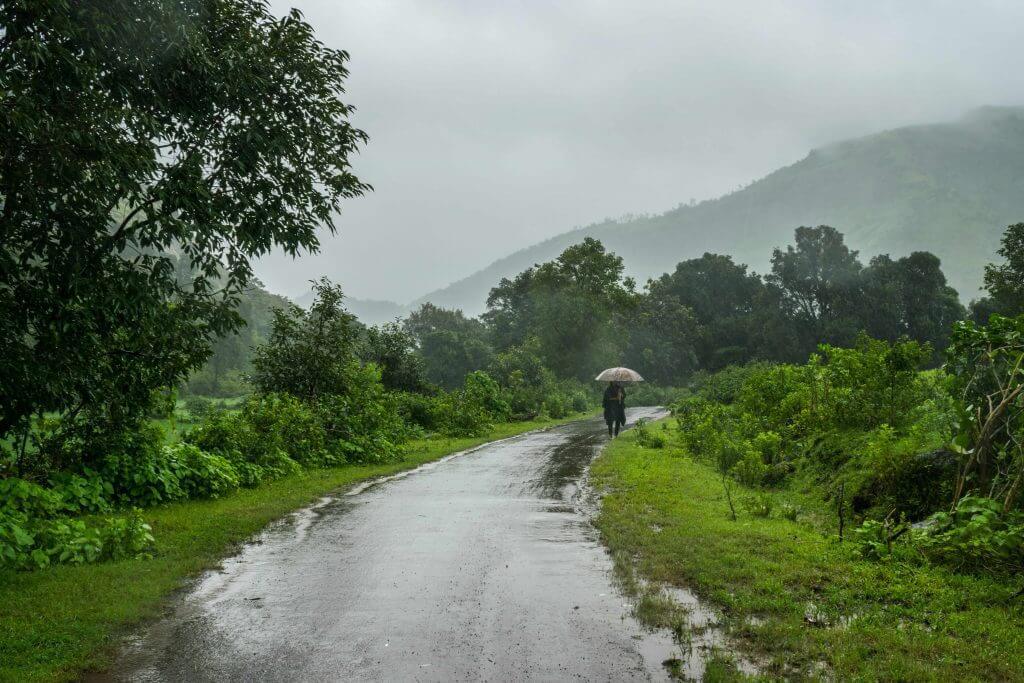Mawsynram, a small village located in the northeastern state of Meghalaya, India, is renowned for being the wettest place on Earth. Nestled in the picturesque Khasi Hills, this unique location offers breathtaking landscapes, rich biodiversity, and a fascinating cultural heritage. The village's extraordinary weather patterns make it a point of interest for travelers and researchers alike.
Geography and Climate
Mawsynram sits at an elevation of about 1,400 meters (4,593 feet) above sea level. It is strategically located close to the Garo and Khasi hills, which play a significant role in its climate. The monsoon season, which typically runs from June to September, brings torrential rainfall, contributing to Mawsynram’s reputation. On average, Mawsynram receives about 467.4 inches (around 12,000 mm) of rainfall annually, a record-breaking amount that surpasses any other place on the planet.
The unique geography of Mawsynram, characterized by its lush green hills, deep valleys, and numerous waterfalls, significantly influences its weather. The village is positioned in the path of the southwest monsoon winds, which gather moisture from the Bay of Bengal. When these winds hit the Khasi Hills, they are forced to rise, cooling and condensing to form rain clouds, resulting in heavy precipitation.
Flora and Fauna
The extreme rainfall in Mawsynram fosters a diverse ecosystem. The region is home to various plant species, including orchids, ferns, and tall grasses, which thrive in the moist environment. The rich biodiversity also supports numerous animal species. Among them, you can find a variety of birds, butterflies, and small mammals, making it a hotspot for nature enthusiasts and researchers.
One of the most remarkable features of Mawsynram’s ecosystem is its living root bridges. The indigenous Khasi people have cultivated these unique structures using the roots of rubber trees, which grow over time to form sturdy, functional bridges. These bridges not only provide access across streams but also showcase the intricate relationship between the local community and their environment.
Cultural Significance
Mawsynram is predominantly inhabited by the Khasi tribe, known for their matrilineal society where lineage is traced through the mother. The local culture is rich in traditions, festivals, and folklore. The people of Mawsynram celebrate various festivals throughout the year, often centered around agriculture, harvest, and community bonding.
One of the most significant festivals is "Shad Suk Mynsiem," a dance festival that showcases traditional Khasi dances and music. This event attracts both locals and tourists, providing an excellent opportunity to experience the vibrant culture and warm hospitality of the Khasi people.
Tourism in Mawsynram
While Mawsynram is primarily known for its record-breaking rainfall, it is also an emerging tourist destination. Travelers flock to the village to experience its natural beauty, cultural heritage, and unique weather conditions. The heavy rain transforms the landscape into a lush paradise, making it a perfect spot for photography and nature walks.
Key attractions in and around Mawsynram include:
- Nohkalikai Falls: One of the tallest waterfalls in India, Nohkalikai Falls plunges over 1,100 feet. The sight of water cascading down the rocky cliffs, especially during the monsoon, is a breathtaking experience.
- Sohra (Cherrapunji): Located nearby, Sohra is famous for its stunning vistas, living root bridges, and numerous waterfalls. It often serves as a base for tourists exploring the region.
- Mawsmai Cave: A limestone cave that showcases stunning stalactite and stalagmite formations. The cave is easily accessible and provides an intriguing glimpse into the geological wonders of the region.
- Dawki: Just a short drive from Mawsynram, Dawki is known for its crystal-clear river and picturesque landscapes. The Umngot River is a popular spot for boating and offers a serene escape from the bustling world.
- Local Markets: Exploring the local markets is a must for those wanting to experience the culture of Mawsynram. You can find handicrafts, traditional textiles, and fresh produce, providing a glimpse into the daily lives of the Khasi people.
Challenges and Sustainability
Despite its allure, Mawsynram faces challenges related to climate change and environmental sustainability. The heavy rainfall, while essential for the ecosystem, also leads to soil erosion and landslides. The local government and community are actively working on sustainable practices to manage the delicate balance between preserving the environment and promoting tourism.
Efforts are being made to raise awareness about the importance of preserving Mawsynram’s natural beauty. Eco-tourism initiatives are being introduced, allowing visitors to engage with the environment responsibly. These initiatives encourage visitors to appreciate the natural wonders of Mawsynram while minimizing their ecological footprint.
Conclusion
Mawsynram is more than just a destination known for its heavy rainfall; it is a place where nature, culture, and community intertwine. The village's unique weather patterns, stunning landscapes, and rich heritage make it a captivating location for adventurers and nature lovers alike. As more people discover the charm of Mawsynram, it is essential to foster sustainable tourism practices that protect this precious environment for generations to come. Whether you're drawn by the allure of the rain or the warmth of its people, Mawsynram promises an unforgettable experience.





Comments